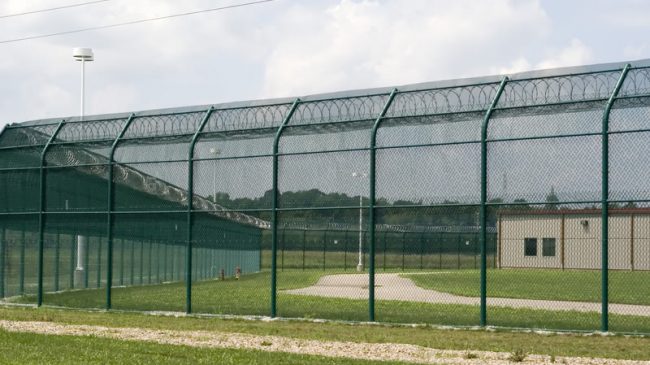New York City Comptroller Scott M. Stringer recently announced that the city’s Employee Retirement System (NYCERS) would be the first major public pension system in the U.S. to divest from private prison companies. Though well-intentioned, Stringer’s proposal not only misunderstands the actual influence of privatized prisons, but also could be reducing the retirement security of NYCERS members. On top of this, New York City’s own poor experience running prisons suggests competition with the private sector might actually improve the practices of NYC’s Department of Corrections, to the benefit of taxpayers and inmates.
In the press release announcing the decision, Mr. Stringer admonished private prisons for working “to turn back the clock on years of progress of criminal justice,” quoting several local lawmakers critical of private prisons by referring to such prisons as “morally repugnant,” and claiming the private prison industry was “hurt[ing] our City.”
Divestment is a strategy similar to a boycott where investors pull out funds from target firms to get them to change their business practices. Frequent targets of divestment are tobacco companies, gun manufacturers and fossil fuel companies. The ultimate goal of divestment is to achieve social change—usually aligned with progressive goals, though conservative politicians are no strangers to divestment—by using economic pressure to induce companies to change business practices.
Yet, blanket claims of private prisons’ inferior business practices and the accompanying moral objections NYCERS presented in its divestment announcement both rest on questionable logic. Claims like those made by Mr. Stringer overstate the influence the private prison industry on the criminal justice system; after all, they only account for 8.9% of all inmates housed in federal and state prisons in 2014, a tiny fraction of the inmate population.
At the same time, progressive fear-mongering over private prisons ignores the dominant influence elected officials and public sector labor unions have always and will always continue to exert over the criminal justice system. Private prison operators simply don’t set criminal laws or sentencing guidelines, issue verdicts, or conduct parole hearings—government does. To blame an industry accounting for a tiny share of the U.S. inmate population as the bogeyman for all of the ills in the criminal justice system is misplaced and an utter distraction for those of us that truly care about issues like over-incarceration, recidivism and other symptoms of a dysfunctional criminal justice system.
But even if the private prison industry exerted the outsized influence its opponents maintain it does, that should not be considered grounds for divestment if those investments are producing positive returns for NYCERS pensioners. When it comes to managing investments, the fiduciary responsibility for NYCERS is to maximize returns for pensioners and employees.
Activist investment by public-sector institutions is generally undesirable because influencing corporate behavior is best done through institutions with greater democratic accountability (i.e. legislatures) or by regulatory agencies with better knowledge of the industries regulated.
It’s acceptable (indeed, praiseworthy) for an employee to be a socially conscious investor as long as they use their own money to make this statement. But by using pension fund assets to make a statement against a “criminal justice system [focused on building] bigger prisons…at the expense of communities of color,” NYCERS is using its members’ retirement savings for a cause they may or may not agree with.
Moreover, this violates the fiduciary duty of pension managers by deliberately making investment policy changes that aren’t guided exclusively by investment returns. These policies have real consequences. CalPERS has missed out on $3 billion in investment returns since its decision to divest from tobacco companies in 2000, and the Norwegian Government Pension Fund’s returns were 1.1% lower over the past decade due to divestment from weapons manufacturers, thermal coal companies, and tobacco companies.
To be fair, the study NYCERS commissioned last year to inform this change was charged with investigating a way to divest that would add minimal investment risk to the plan. But the fact that this concern needed to be explicitly addressed shows that the retirement security of NYCERS members isn’t the board’s primary concern, as it is supposed to be.
—-
New York State deserves credit for lowering its sentencing guidelines through amendments to the modern incarnation of the oldest (circa 1797) repeat–offender statue in the United States. However, despite the city’s prison population declining by 25% since 1999 due in no small part to such reforms, spending on New York City’s prisons have increased by 33% during the same period.
Rising costs in the face of falling prison populations suggests problems with New York City’s ability to manage its prisons, with plenty of evidence to back this claim. For example, Rikers Island—the second–largest prison system in the nation and home to the majority of New York City’s inmates—has received a great deal of publicity in recent years, almost all negative.
Just last month, the City and two former Rikers inmates reached a $1.2 million settlement, claiming a “pervasive culture of rape” exists at Rikers’s women’s jail. Also in May, state officials declared Rikers Island “too dangerous” to transfer inmates from state prisons. A recent U.S. Department of Justice investigation found, among other violations, repeated uses of unjustifiable force against juvenile offenders in Rikers’s facilities—including incidents where staff fraudulently acted as if under duress to justify excessive force.
Further, the leader of the New York City Corrections Officers’ Union resigned in the face of widespread corruption last year, while the current head the NYC Correction Department’s Investigation Division faces allegations of illegal spying on officials at the city’s Department of Investigation.
Meanwhile, Rikers’s facilities themselves are in poor condition. While the city announced plans to close the full Rikers Island complex earlier this year, doing so will take years and details about replacement facilities are still very uncertain.
Other political entities have addressed similar issues by opening prison management to public-private competition, not crusading against it. A strong system of government oversight of performance–based prison contracts that penalize operators for underperformance in cost or quality can help prevent the systematic abuses and corruption that have persisted at Rikers under government operation.
Other potential benefits from public-private partnerships in corrections include shielding taxpayers from exposure to lawsuits filed against prison staff and limiting the accrual of costly long–term post-retirement obligations for public sector prison staff. Jurisdictions that oppose private prisons forego these benefits.
If changes cannot be made to New York’s existing ban on private prisons, governments can still use private firms to build and/or modernize prison facilities, as states and localities with similar bans (like California) already do. In such cases, public officials can avail themselves of the private sector’s ability to deliver new brick and mortar facilities more quickly and at lower cost, even if they choose not to go further by looking at outsourced facility operations too. Exploring privatized prison construction alone (without management and operation) could facilitate the massive inmate transfer required to shut down Rikers Island, all to the benefit of the taxpayers.
Overall, in the face of New York City’s dismal record of managing its prisons, divestment from the private prison industry by the very fund from which Rikers corrections officers draw their retirement should be viewed as a politically motivated dismissal of a policy that could improve the city’s corrections facilities, thereby improving public safety.
Even if opposition to private prisons were justifiable on policy grounds, NYCERS’s efforts likely won’t work. The most notable example employed to argue for divestment is the economic pressure applied to Apartheid South Africa. Many investors divested from firms tied to the Apartheid regime, but economic sanctions and general pressure from the international community played a much greater role. A 1999 study published in the Journal of Business found no evidence that divestment itself was responsible for the end of Apartheid.
—-
Last year, NYCERS earned a dismal 1.52% return on investments. By divesting from holdings in private prisons, the 68%-funded NYCERS is contravening its obligation to its members by forgoing badly needed investment returns to try and damage an industry that offers real policy solutions, even if prison operations ultimately remain “in–house.” New York City prisons currently face myriad problems relating to both agency management and structural integrity, and some of these problems have at least partially been remedied in other jurisdictions by allowing private prison companies to compete alongside the public sector for prison operation
Public-private partnerships offer a way for New York City to improve its prison system, but lawmakers in the Big Apple seem content to avoid having their public sector employees face competition, while also harming those same employees through an investment policy that’s all heat and no light.
Stay in Touch with Our Pension Experts
Reason Foundation’s Pension Integrity Project has helped policymakers in states like Arizona, Colorado, Michigan, and Montana implement substantive pension reforms. Our monthly newsletter highlights the latest actuarial analysis and policy insights from our team.

